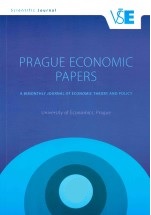What Do Post-Communist Countries Have in Common When Predicting Financial Distress?
What Do Post-Communist Countries Have in Common When Predicting Financial Distress?
Author(s): Madalina Ecaterina Popescu, Victor DragotăSubject(s): Social Sciences, Economy
Published by: Vysoká škola ekonomická v Praze
Keywords: financial distress; predictors; prediction models; post-communist countries; CHAID decision trees;neural networks;
Summary/Abstract: Business failure prediction is an important issue in corporate finance. Different prediction models are proposed by financial theory and are often used in practice. Their application is effortless, selecting only few key inputs with the greatest informative power from the large list of possible indicators. Our paper identifies the financial distress predictors for 5 post-communist countries (Bulgaria, Croatia, the Czech Republic, Hungary and Romania) based on information collected from the Amadeus database for the period 2011–2013 using CHAID decision trees and neural networks. We propose a short list of indicators, which can offer a synthetic perspective on corporate distress risk, adapted for these countries. The best prediction models are substantially different from country to country: in the Czech Republic, Hungary and Romania the flow-approach indicators perform better, while in Bulgaria and Croatia – the stock-approach indicators. The results suggest that the extrapolation of such models from one country to another should be made cautiously. One interesting finding is the presence of the ratios per employee as predictors of financial distress.
Journal: Prague Economic Papers
- Issue Year: 27/2018
- Issue No: 6
- Page Range: 637-653
- Page Count: 17
- Language: English

